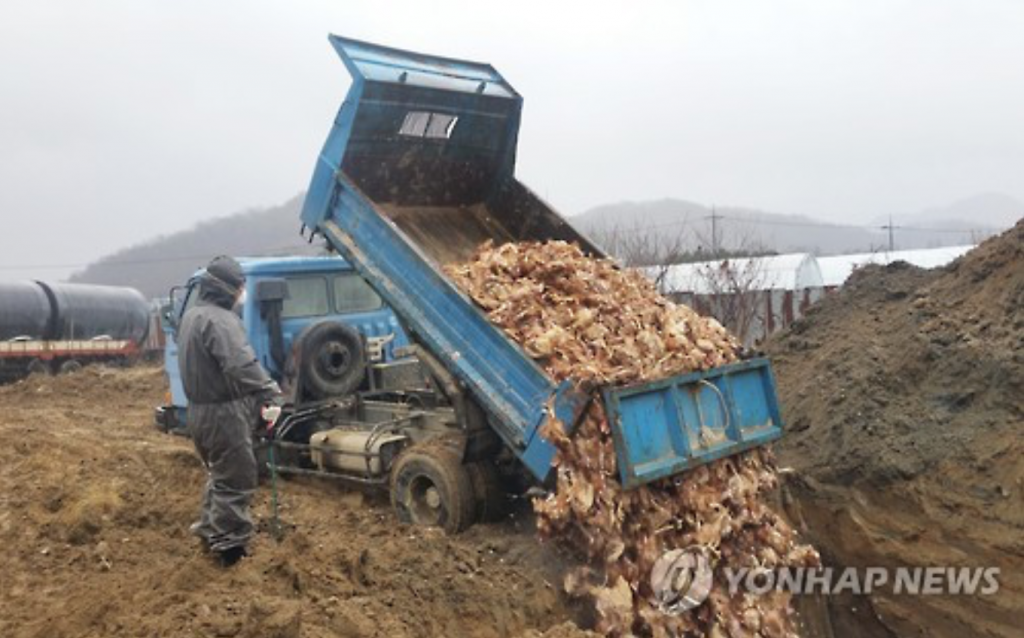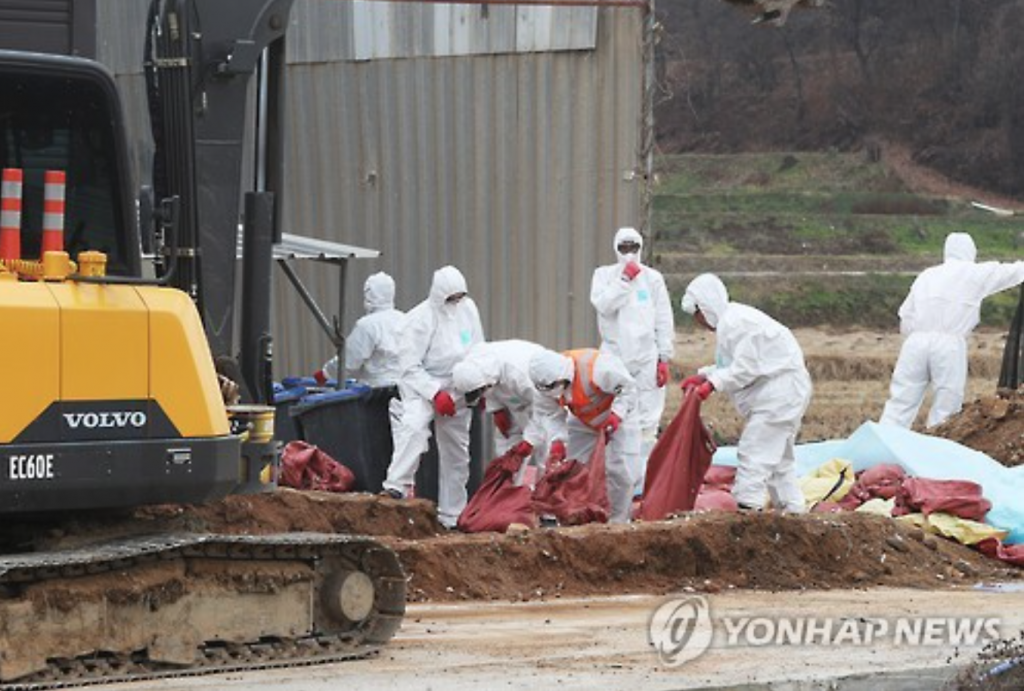
The culling process usually takes place by sealing up a poultry barn, and injecting gas (i.e. carbon dioxide) or raising the internal temperature. If the birds survive the first attempt, the same process is repeated. The birds that fail to succumb to the initial culling procedures end up being buried alive. (image: Yonhap)
SEOUL, Dec. 28 (Korea Bizwire) – It has been over 40 days since the first report of suspected bird flu.
So far, officials have culled over 27 million poultry, the largest number the country has yet to see, and although the outbreak is now showing signs of alleviation with fewer AI reports coming in, the situation is still expected to take some time to settle and for farmers to recover from its aftermath.
Those struggling most from the record outbreak are of course the poultry farm owners, having to let hundreds, if not thousands, of their livestock be buried – often alive – in the ground, but this process is also haunting the farmers, quarantine officials, and outside contractors who have been carrying out the murderous process on a daily basis.
“A”, whose identity was undisclosed, owns a duck farm in Eumseong County, which is now empty of the very animals that used to stroll around in it. Some 7,000 ducks were culled from the farm, and the memory of culling the birds now haunts him.
“I raised them like my kids, and it used to hurt just selling them to the market,” he said. “Imagine how I’d feel watching all of them get buried alive. Anyone who’s raised livestock would understand me.”
“A” started his farm ten years ago. But this was the first time he personally witnessed the culling, and he is now suffering from the traumatizing experience.
“The memory of the entire farm surrounded by dead ducks, and carried away by heavy machinery to be buried still comes back to me. I’ve even woken up from a nightmare hearing screams of the ducks.”
“A” is not alone. Same trauma now haunts outside contractors who have been out in the field slaughtering millions of AI-infected or suspected infected birds.
The culling process usually takes place by sealing up a poultry barn, and injecting gas (i.e. carbon dioxide) or raising the internal temperature. If the birds survive the first attempt, the same process is repeated. The birds that fail to succumb to the initial culling procedures end up being buried alive.

“I raised them like my kids, and it used to hurt just selling them to the market,” he said. “Imagine how I’d feel watching all of them get buried alive. Anyone who’s raised livestock would understand me.” (image: Yonhap)
“That was the first time I ever touched a dead duck,” recalled “B”, who was recruited as a daily worker. “After witnessing tens of thousands of dead animals piled on top of each other, I couldn’t eat or sleep properly for a couple of days.”
Given the circumstances, culling is a job that most shy away from, and for this reason, over half of all personnel mobilized for the job are foreign workers.
“It is difficult to find workers even when they’re offered up to 50 percent in extra wages,” said an official from one of the culling contractors. “They have to remove dead animals from the barns, and even kill the animals that survive. Who would want such a job?”
The official added that a lot of the recruited young workers end up not showing up after the first day of work.
“Eventually, it’s the foreign workers, who are most desperate for jobs, taking on the bulk of the work in the process.”
Due to the lack of personnel, and given the severity of the outbreak, public officials have also been called in to the sites, not for the physical culling process, but to help with the quarantine efforts and make sure that all culling procedures are carried out as in the manual.
“Although I’m not partaking in the actual culling, monitoring a site where thousands are being killed is not easy,” said an official from Jincheon County. “I wish I could just stay home on days when I’m expected at the sites.”
By Joseph Shin (jss539@koreabizwire.com)






